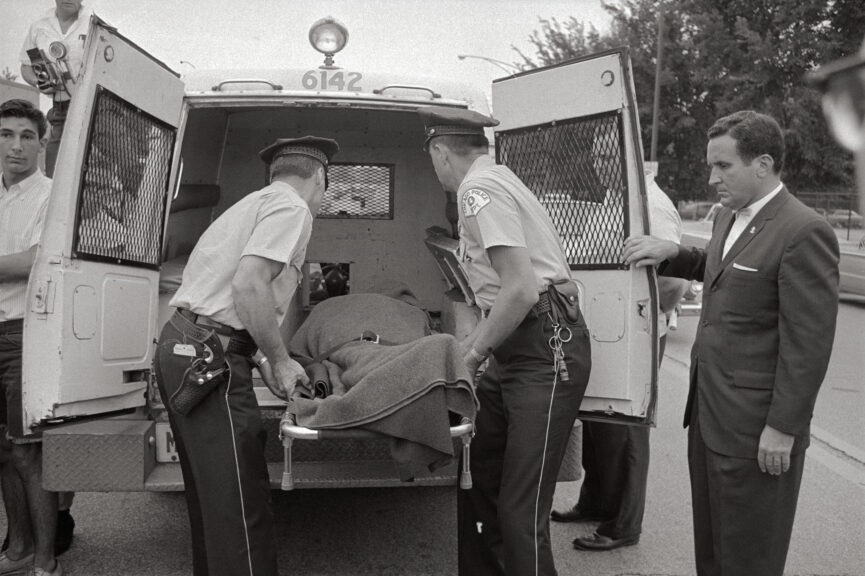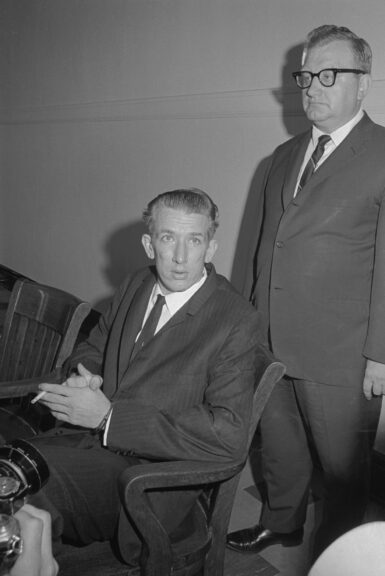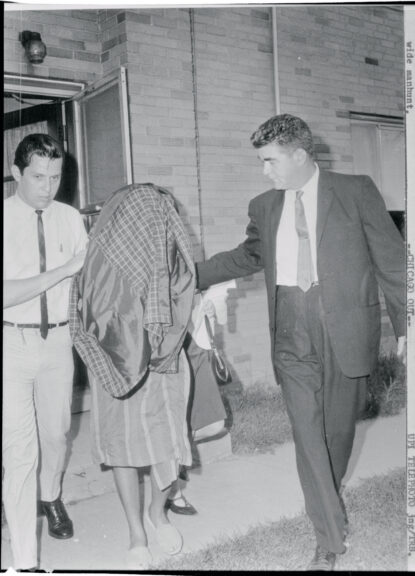On July 13, 1966, a man broke into a Chicago, Illinois townhouse where nursing students lived. Inside, he found three nurses, and, using a gun and a knife, forced them into a bedroom where three other nurses already were.
The man used torn strips from bedsheets to tie up the six women’s hands and feet, using nautical knots. By midnight, three more nurses returned home and were tied up as well, according to the History Channel.
In the early hours of the morning on July 14, the man robbed the women and began taking them one by one into different rooms of the house, where he stabbed and strangled them to death. One woman was raped before she was killed. The other women, still scared and tied up in one of the bedrooms, could hear the muffled screams of their roommates as they were murdered.
One student, Corazon Amurao, hid under a bed, and was lucky to survive when the murderer lost track of how many women remained in the house. She waited until 6 a.m. before coming out from under the bed, and then crawled onto a second-story ledge and called for help. When police arrived, Amurao provided a detailed description of the attacker, and by the next morning, the sketch of the man believed responsible was on the front page of every local newspaper.

(Original Caption) The body of one of the eight student nurses found slain in the living quarters of the South Chicago Community Hospital is shown being placed in an ambulance for removal to the morgue. Bettmann / Contributor. Getty Images.
On the night of July 15, Richard Speck was drinking with a drifter named Claude Lunsford and another man near the Starr Hotel, where Speck and Lunsford were staying at the time. The next day, Lunsford saw the sketch in the newspaper and recognized Speck. So, he called the police, but the police didn’t respond.
Speck, apparently seeing his own face in the newspapers, slashed his right wrist and left elbow on July 16 in an attempt to kill himself. The hotel desk clerk called in an emergency around midnight that night, and Spec was taken to Cook County Hospital in the wee hours of July 17. There, Dr. LeRoy Smith recognized Speck from his “Born To Raise Hell” tattoo described in the newspapers about the killings. The police arrived and arrested Speck.
At the time Speck was arrested, the landmark Miranda decision had just been made, with law enforcement offices across the country unsure how to proceed. Because of this, Speck wasn’t questioned until three weeks after his arrest.
Speck had a lengthy criminal record prior to the murders of eight nurses in Chicago, beginning in Dallas, Texas. He started drinking at the age of 12, and was first arrested in 1955 at the age of 13 for trespassing. Over the next eight years, he racked up dozens more arrests for misdemeanors. He was in jail for disturbing the peace when his daughter, Robbie Lyn Speck, was born in 1962.
In 1963, when Speck was 21, he was sentenced to three years in prison for forgery and burglary, but he was paroled 16 months later in 1965. He immediately returned to committing crimes, getting arrested a week after his release for attacking a woman with a carving knife, but ran away when the woman screamed. He was convicted this time of aggravated assault and sentenced to 16 months to run concurrently with his parole violation.
Six months later, an error led to Speck being released early, and he managed to work three months as a truck driver for a meat company before getting fired. In January 1966, Speck’s estranged wife, whom he married when she was 16 after knowing her for three weeks, filed for divorce. Also in January, Speck stabbed a man during a fight at a bar. His aggravated assault charge was reduced to disturbing the peace, allowing him to pay a $10 fine and spend three days in jail for failing to pay it.
In March 1966, Speck bought an old car and robbed a grocery store for 70 cartons of cigarettes. He sold the cigarettes out of the trunk of the car in the grocery store’s parking lot before abandoning the vehicle. A warrant was issued for his arrest, but Speck’s sister took him to the bus station to board a train for Chicago, Illinois.
He bounced around between family members in the early days of his life in Chicago, before moving across the state into a hotel in Monmouth, IL. While bar hopping in nearby Gulfport, Speck and some acquaintances were detained after Speck allegedly threatened a man in a bar with a knife.
In early April 1966, a 65-year-old woman was raped and robbed and a 32-year-old woman was found dead in an empty hog house behind Frank’s Place, a tavern owned by Speck’s brother-in-law. Speck was briefly questioned by police and he was asked to stay in Monmouth for further questioning, but when police showed up to question him again, he was gone. They found items stolen from the 65-year-old woman’s house and two other burglaries.

(Original Caption) Richard Speck, accused of the murder of eight Chicago Nurses. Bettmann / Contributor. Getty Images.
Speck then moved in with his sister in Northwest Chicago and began working as a Merchant Marine, but his first voyage was cut short after he developed appendicitis. When he was released from the hospital, he returned to working on a ship until he was dismissed after fighting with one of the boat’s officers.
After failing to find work on another ship, Speck left his sister’s house and moved into a hotel on July 13, 1966, where he began drinking. After drinking at several bars, he attacked a 53-year-old woman at knifepoint before taking her to his room, raping her, and robbing her. Among the items he stole was a handgun. He left her house and ate dinner, returning to drink at the hotel bar until 10:20 p.m. before walking to the nurses’ townhouse and murdering Gloria Davy, Suzanne Farris, Merlita Gargullo, Mary Ann Jordan, Patricia Matusek, Valentina Pasion, Nina Jo Schmale, and Pamela Wilkening.
Speck claimed he didn’t remember killing the nursing students, but he had previously confessed to the crime while he was in the Cook County Hospital following his suicide attempt. The doctor to whom he confessed, however, couldn’t testify because Speck had been sedated when he made the statements.
Speck’s trial began on April 3, 1967. Corazon Amurao, the surviving nursing student, identified Speck as the killer, and fingerprints found at the scene were matched to Speck. After just 49 minutes of deliberation, a jury found Speck guilty and recommended the death penalty.

(Original Caption) Corazon Amarao, 23, Philippine exchange student and lone survivor of mass murder in which 8 other student nurses were slain. Bettmann / Contributor. Getty Images.
On June 28, 1971, the U.S. Supreme Court reversed Speck’s death penalty due to jurors being excluded who did not support capital punishment. Speck was resentenced to eight consecutive sentenced of 50 to 150 years for a total of 400 to 1,200 years in prison.
In 1978, Speck publicly confessed to the murders while speaking to a columnist for the Chicago Tribune.
In 1991, he died of a heart attack at the age of 49.

Continue reading this exclusive article and join the conversation, plus watch free videos on DW+
Already a member?

.png)
.png)

